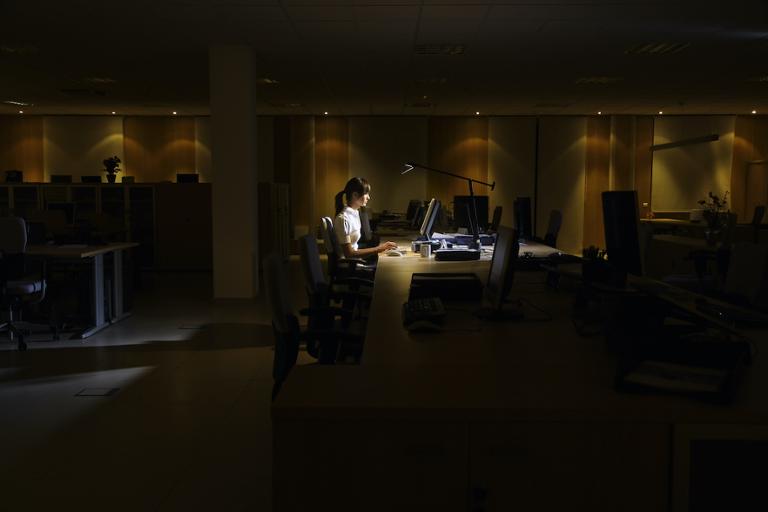CIOs, project managers, and the most vital members of their teams will likely be among the first wave of employees returning to the office. According to Dice’s ongoing COVID-19 Sentiment Survey, some 16.5 percent of technologists are already back in the office full-time, while another 15.1 percent have returned on a part-time basis; some 23.4 percent also reported feeling “extremely safe” at the prospect of returning to their old desk.
No matter what technologists’ enthusiasm for returning, however, team leaders and executives must puzzle out an effective return-to-work strategy that builds trust between employees and their company. Here are some ways to consider safeguarding your team’s well-being as they prepare to return to the office in coming quarters.
Analyze Data to Prioritize Returns
Most employers are wisely using a phased approach to returning employees and vendors to the workplace in order to minimize potential exposure to COVID-19. At major companies such as Google and Apple, only a small fraction of employees will return at first, with many not scheduled to come back to the office until the very end of 2020 or the beginning of 2021.
Analyzing everything from employee health information and location, as well as project schedules and importance to the strategic roadmap, can help managers balance safety and production output when deciding which team members should return first.
Creating “A” and “B” scrum teams that work two-week cycles onsite (which coincides with the virus’s incubation period), or letting some team members work during off-peak hours, may help them avoid crowded public transportation or balance family responsibilities with work, suggested Fiona Raymond-Cox, a business continuity expert and principal of Raymond-Cox Consulting.
Implement Daily Health Screening
Screening staff and visitors daily for symptoms, elevated temperatures or close contact with someone who has tested positive for the virus can help prevent COVID-19 from entering the workplace. Managers also need to make accommodations, such as telework, for at-risk teammates with underlying conditions.
Fortunately, there’s an app (or two) to help you with that ongoing task. Regardless of the screening method, mangers need to follow privacy rules and consider informing the team if someone tests positive for the virus (without disclosing their name).
“Be careful not to adversely judge those who can’t return to work or put pressure on teammates to come to work if they are feeling sick,” advised Katie Drucker, head of business development and partnerships for Madrona Venture Group and co-creator of the firm’s “Back to Work Toolkit.”
Team leaders have a responsibility to monitor peer pressure and foster equality among remote and in-house workers. You certainly don’t want to inadvertently create two classes of corporate citizenship, she added.
Keep in mind that managers are responsible for ensuring the safety of staff who travel or meet with clients or vendors off-site. “Ask clients about their protocols before allowing a member of your team to visit their site,” Raymond-Cox noted. (You can find a sample visitor health screening questionnaire in the firm’s office reopening plan.)
Also, requiring team members to work from home for two weeks after returning from business or personal trips is a practice endorsed by 38 percent of participants in a recent Qualtrics survey about reintroducing the workforce to the office.
Communicate, Communicate, Communicate
Maintaining regular, transparent two-way communication is vital, especially during times of extreme stress and change. Communicate the expectations before your team returns via video or email. Then, make it easy for them to ask questions and raise concerns by employing a variety of communication methods, including town halls or online chats. Also, continue to provide information about resources such as free testing for COVID-19 (and antibodies), EAP, sick pay or wellness programs.
Some of the conversations you will have with team members about their health or family situations may seem a bit awkward at first, Drucker acknowledged. In fact, you may find out things about your teammates that you never knew before. But engaging in frequent one-one-one dialogues with team members will improve comfort levels over time.
Implement Door-to-Door Social Distancing
The latest Centers for Disease Control and OSHA guidelines advise that team members stay at least six feet apart throughout the day in order to minimize the potential spread of COVID-19. To keep workers separated, companies are rearranging furniture, installing plexiglass partitions between cubicles and limiting capacity in conference, break and server rooms. They are also placing markers on floors and walls to reduce congestion and remind workers to wash their hands frequently (and avoid handshakes or hugging).
Consider providing grab-and-go lunches and continuing the practice of holding daily scrums or standups online. Require face coverings in small spaces such as elevators, hallways or common areas and designate staircases as up or down.
Help your team members feel confident about returning by sending them a “welcome back” package containing face masks, hand sanitizer, a revised layout map and copy of the ground rules.
Execute a Cleaning Regimen
Although the CDC guidance has been revised, safely sanitizing desks, keyboards, mice and mobile devices is still recommended. You’ll need to initiate a more thorough cleaning if someone in your office gets sick with COVID-19. Plus, executing a frequent, visible cleaning regimen, especially in common areas, shows commitment to employee wellbeing and builds confidence.
Visit our COVID-19 Resource Center, which aims to provide the tech community with the best, most up-to-date information on the novel coronavirus.



